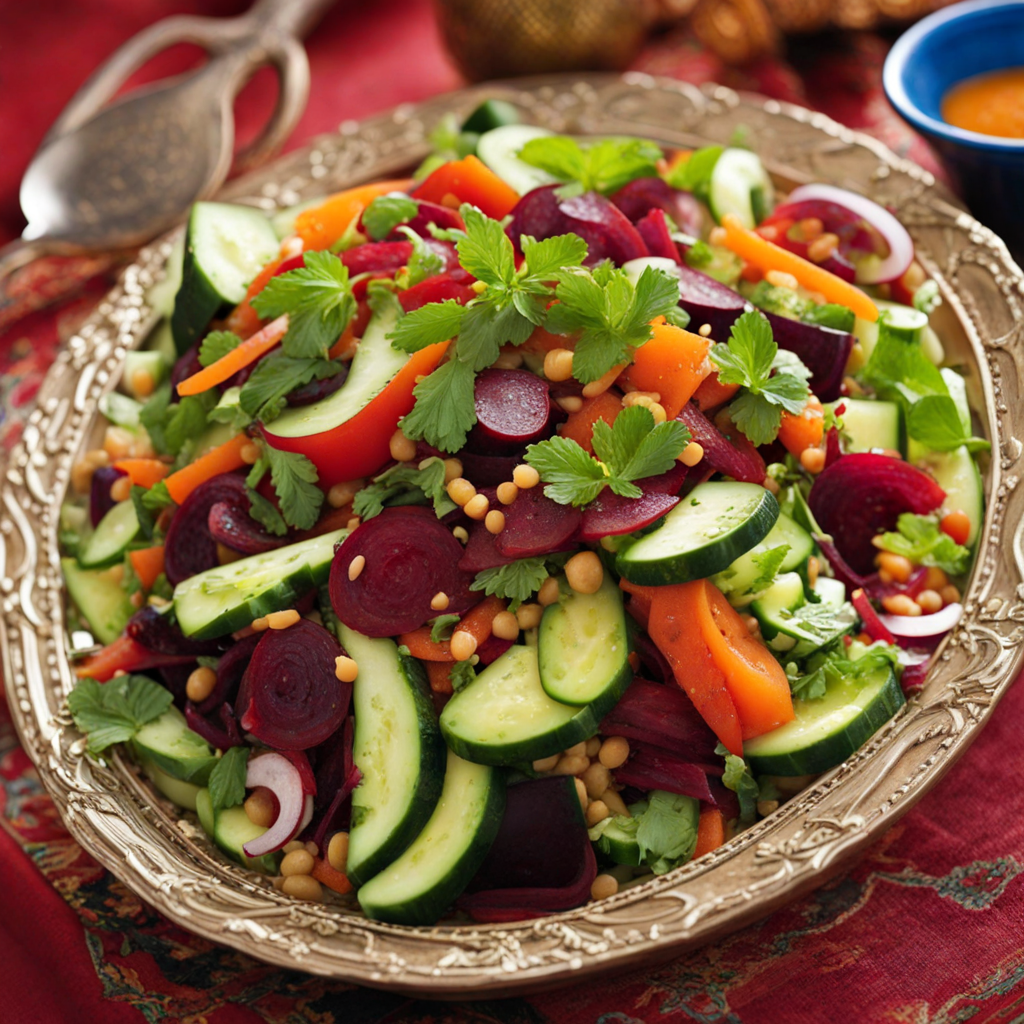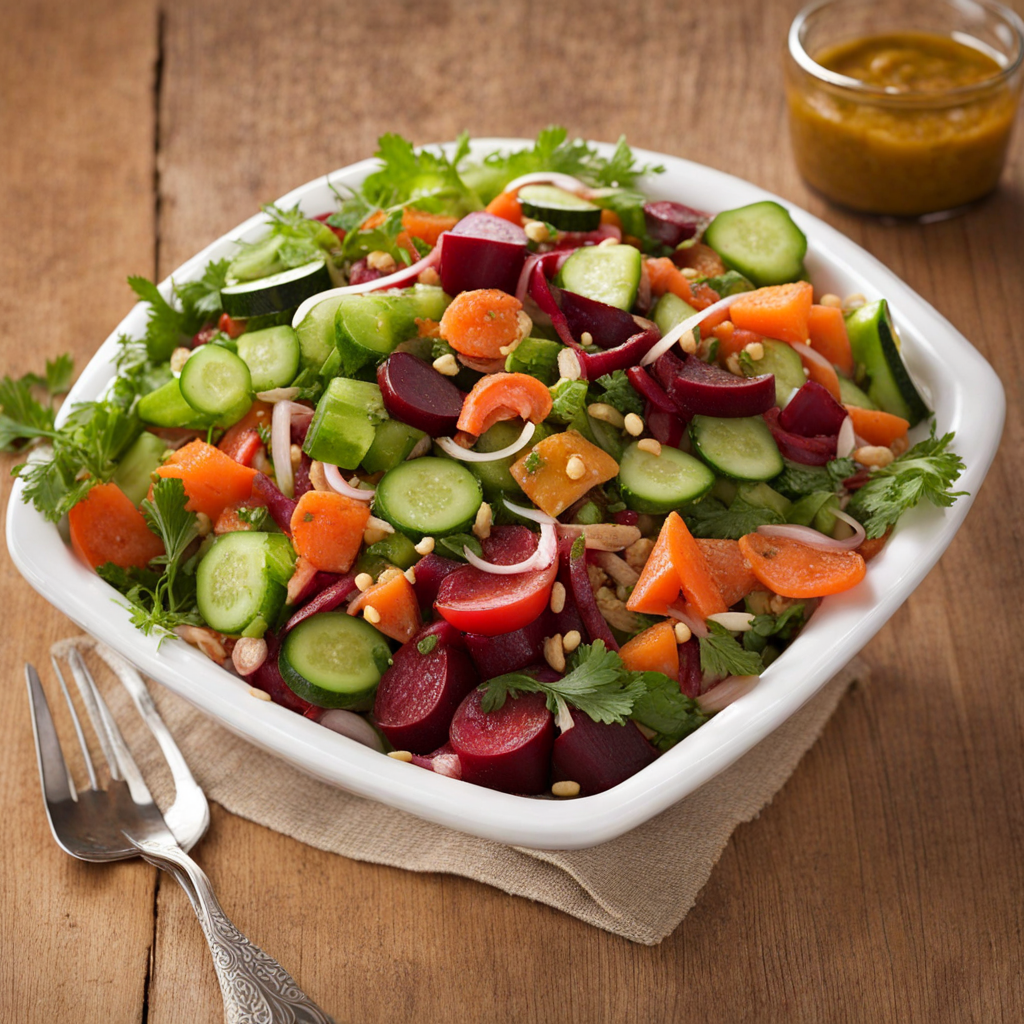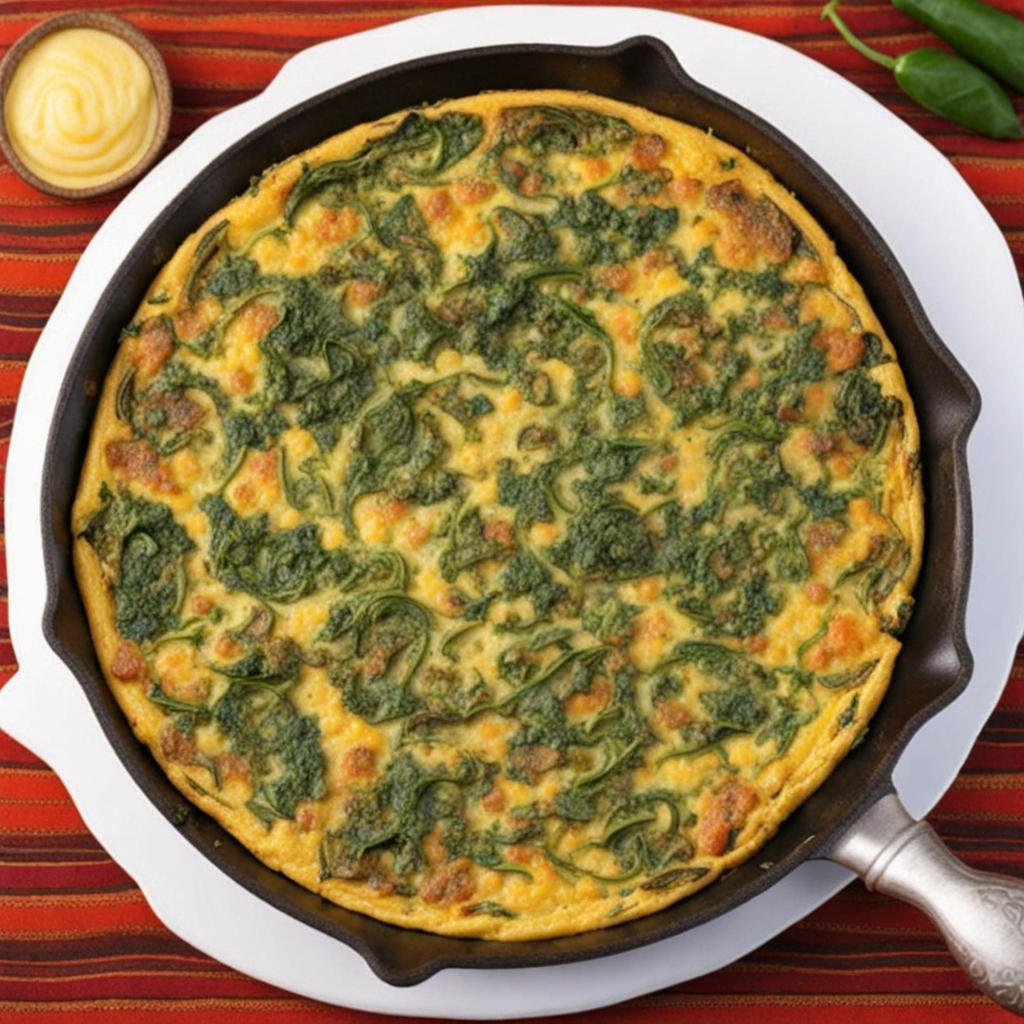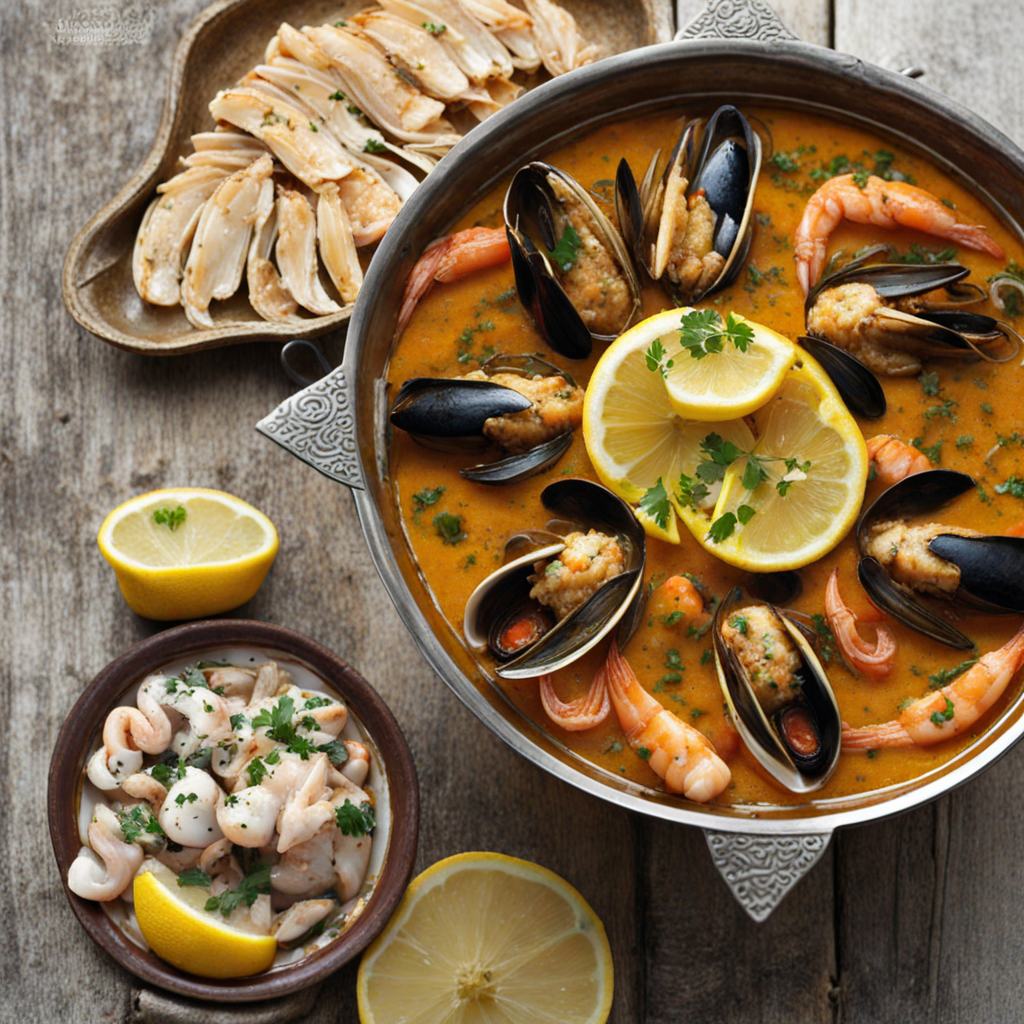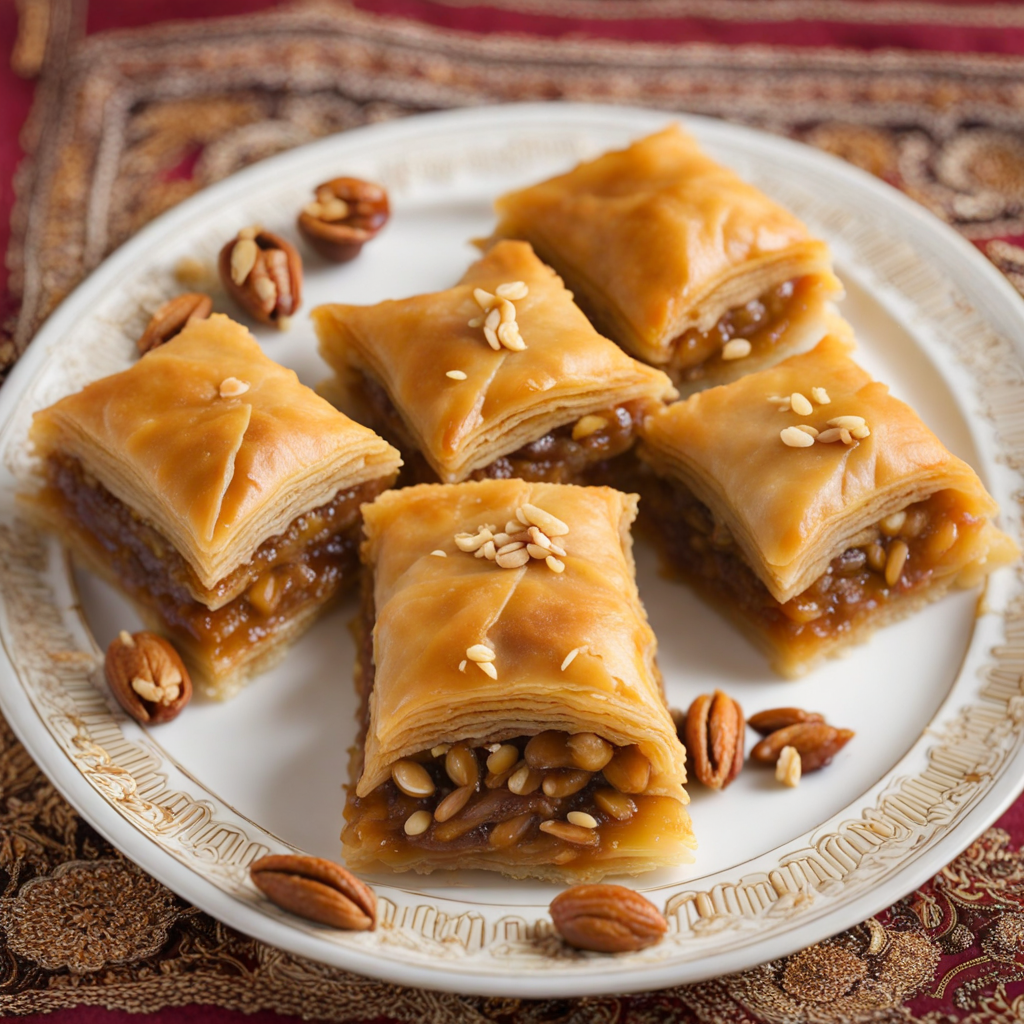Moroccan Salad
Moroccan Salad is a vibrant and refreshing dish that showcases the rich culinary heritage of Morocco. Typically composed of a colorful medley of fresh vegetables, this salad features ingredients such as ripe tomatoes, crisp cucumbers, bell peppers, and red onions, all finely chopped to create a visually appealing mix. The salad often incorporates fresh herbs like parsley and cilantro, which not only enhance the flavor but also add a fragrant aroma that is quintessentially Moroccan. The combination of these fresh vegetables provides a satisfying crunch and a burst of natural sweetness, making it a perfect accompaniment to any meal. The dressing is where Moroccan Salad truly shines, as it is often drizzled with a zesty mix of olive oil, lemon juice, and a pinch of cumin, bringing together the diverse flavors of the ingredients. The olive oil adds a smooth richness while the lemon juice provides a bright acidity that complements the freshness of the vegetables. Cumin, a staple spice in Moroccan cuisine, adds an earthy depth that enhances the overall taste experience. Sometimes, a hint of chili or paprika is included for those who enjoy a bit of heat, further elevating the flavor profile of the salad. Moroccan Salad is not just a dish but also a sensory experience. The vibrant colors of the vegetables, the aromatic herbs, and the tantalizing dressing come together to create a dish that is as pleasing to the eye as it is to the palate. Served chilled or at room temperature, it can be enjoyed as a starter, a side dish, or even a light main course, making it versatile for any occasion. Whether you're hosting a gathering or simply looking to try something new, Moroccan Salad offers a delightful taste of the Mediterranean that transports you to the bustling markets of Morocco.
How It Became This Dish
The History and Significance of سلطة مغربية (Moroccan Salad) #### Origins سلطة مغربية, or Moroccan salad, is a vibrant dish that encapsulates the essence of Moroccan cuisine—a culinary tradition that is as rich as its history. The origins of Moroccan salad can be traced back to the diverse influences that have shaped Moroccan culture over centuries. Situated at the crossroads of Europe, Africa, and the Middle East, Morocco has been a melting pot of various civilizations, including the Berbers, Arabs, Romans, and later the French and Spanish. Each of these cultures has contributed to the culinary tapestry of the country, leading to the creation of dishes that reflect its complex history. Vegetables have long been staples in the Moroccan diet, with the Berber tribes relying on what their arid environment could provide. The introduction of agriculture allowed for a wider variety of produce, including tomatoes, peppers, cucumbers, and carrots, which are now integral components of Moroccan salad. The infusion of spices such as cumin and paprika, as well as the use of olive oil, can be attributed to the Arab influence, which began in the 7th century with the arrival of Islam. #### Cultural Significance Moroccan salad is more than just a dish; it is a symbol of hospitality and community. In Moroccan culture, food is a central element of social gatherings and celebrations. The preparation and sharing of meals are acts of love and generosity, and salads like سلطة مغربية play an essential role in this tradition. Typically served as a starter or side dish, Moroccan salad is often enjoyed during family meals, weddings, and festive occasions such as Eid al-Fitr and Eid al-Adha. The salad is known for its colorful presentation, which reflects the vibrant culture of Morocco itself. The use of fresh, seasonal ingredients mirrors the Moroccan connection to the land and its agricultural heritage. Furthermore, the communal aspect of sharing a salad—where diners scoop from a central plate—reinforces the values of togetherness and hospitality that are deeply ingrained in Moroccan society. #### Ingredients and Preparation While the basic components of سلطة مغربية generally include tomatoes, cucumbers, bell peppers, and onions, the recipe can vary significantly from one region to another and even from household to household. The versatility of the salad allows for the incorporation of other ingredients such as radishes, avocados, and even fruits like oranges. The dressing is typically made with olive oil, lemon juice, and a blend of spices, giving the salad a zesty flavor that complements the freshness of the vegetables. The preparation of Moroccan salad is often a communal activity, with family members gathering to chop vegetables and prepare the dressing. This not only strengthens familial bonds but also allows for the transmission of culinary knowledge from one generation to the next. In many Moroccan households, recipes are passed down orally, with each cook adding their unique touch, thus evolving the dish over time. #### Evolution Over Time As Moroccan cuisine has evolved, so too has the concept of سلطة مغربية. In the past, salads were often simple and relied heavily on whatever vegetables were in season. However, with the advent of globalization and increased access to diverse ingredients, Moroccan salads have become more elaborate and creative. In recent decades, there has been a growing interest in healthy eating, which has further transformed the way Moroccan salad is perceived and prepared. Chefs and home cooks alike have begun to experiment with the traditional recipe, incorporating superfoods such as quinoa and kale, while still maintaining the integrity of the dish. The use of organic and locally sourced produce has also gained popularity, reflecting a broader movement towards sustainable eating practices. Moreover, the rise of Moroccan cuisine on the global culinary stage has introduced سلطة مغربية to international audiences. Food enthusiasts and chefs around the world have embraced the salad, adapting it to local tastes while showcasing its Moroccan roots. This cross-cultural exchange has led to new interpretations of the dish, which can now be found in fusion restaurants and food festivals worldwide. #### Contemporary Significance Today, سلطة مغربية is celebrated not just as a delicious dish but as a cultural emblem that represents Morocco's rich heritage. It stands as a testament to the country's ability to blend tradition with innovation, preserving the essence of its culinary identity while adapting to changing tastes and lifestyles. In Morocco, the salad continues to be a staple on dining tables across the nation. It is a dish that transcends class and geography, enjoyed by everyone from urban dwellers in bustling cities like Marrakech and Casablanca to rural families in the countryside. The salad's affordability and accessibility make it a beloved staple, and its colorful presentation adds a festive touch to any meal. Furthermore, the global interest in Moroccan cuisine has led to a resurgence of traditional cooking methods and local ingredients, which has positively impacted farmers and local economies. By promoting the use of seasonal and regional produce, the preparation of سلطة مغربية contributes to the sustainability of Moroccan agriculture and helps preserve the country’s culinary heritage. #### Conclusion سلطة مغربية is more than just a dish; it is a vibrant reflection of Morocco's history, culture, and community values. Its origins rooted in diverse influences, it has evolved over time while remaining a cherished part of Moroccan culinary tradition. As it continues to adapt to modern tastes and global trends, this salad remains a symbol of hospitality and connection, embodying the spirit of a nation that celebrates its rich heritage while embracing the future. Whether served at a family gathering or enjoyed at a restaurant, Moroccan salad invites everyone to share in its colorful history and the flavors of Moroccan life.
You may like
Discover local flavors from Morocco


